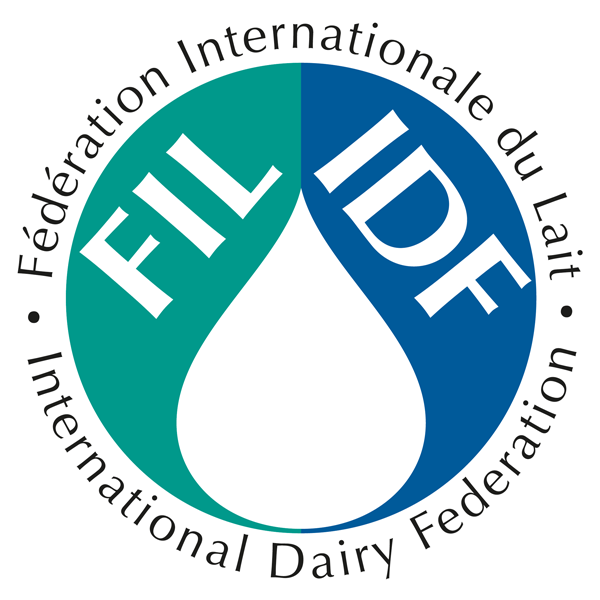Bulletin of the IDF N° 358/2000 - Functional Requirements for Milking Machines Referring to the ISO Standards 3918, 5707 and 6690
Guide to the Use of ISO Standards for Milking Machine Installations and Additional Definitions - Minimum Competency Standards in Dairy Curricula - Variability of the Influence of ß-Lactoglobulin Phenotypes on Milk Compostion - Chemical-Physical Confirmation tests ("Higher" Validation Level) for the Detection of Residues of Antimicrobials in Milk - First Experiences with Automatic Flow Cytometric Determination of Total Bacterial Count in Raw Milk - Recommandations for the Hygienic Design of Storage Tanks for milk & milk products (Scanned copy)
Couldn't load pickup availability
Document info
| pages | 53 |
|---|---|
| published date | 24 March 2000 |
| reference | Bulletin of the IDF No. 358/2000 |
Publication description
Functional Requirements for Milking Machines Referring to the ISO Standards 3918, 5707 and 6690
Proper functioning of the milking machine is essential in achieving proper milking performance and maintaining udder health and milk quality. The 1996 version of ISO Standards 3918, 5707 and 6690 contains various performance requirements that should be followed in order to milk cows adequately. This paper aims to help the field personnel to interpret the results of milking machine testing. For each functional requirement, this paper helps to explain the consequences when a performance requirement is not fulfilled. It is also of assistance in determining the causes and solutions for a particular problem. Although the functional requirements come from ISO Standards, the interpretation is that of the IDF Group of Experts A32.
Guide to the Use of ISO Standards for Milking Machine Installations and Additional Definitions
The expert members of the IDF Group A32 — Milking machines — have found a number of errors and in some cases unclear formulations in the ISO Standards for milking machines installations: ISO 3918 Vocabulary; ISO 5707 Construction and performance, and ISO 6690 Mechanical tests. This paper aims to assist the users of the three ISO Standards in interpreting them for practical application. The first part presents the existing formulation of the errors and the proposed changes are described. The second part introduces some "Additional definitions to ISO 3918".
Minimum Competency Standards in Dairy Curricula
Originally intended as a basis for the establishment of a list of dairy education institutions in IDF member countries, the minimum competency standards published here have been developed to satisfy a need for criteria for use in industry and educational bodies. These minima suggest areas of study relevant to the particular roles appropriate to the required level of employment and recognize that course structure will vary depending on the expertise and the philosophy of the establishment providing the educational/training programme and in concert with local industry requirements. Two main categories of dairy personnel are encompassed in these guidelines: the Dairy Operator (considered to be engaged mainly in direct dairy product manufacture or in basic laboratory analytical work), and the Dairy Specialist (expected to fulfil various supervisory, technical or managerial positions).
Variability of the Influence of ß-Lactoglobulin Phenotypes on Milk Compostion
IDF work on genetic variants of milk proteins was initiated in 1992. This gave rise to two seminars and a paper on milk protein variant genes. The items covered were: Implications of genetic polymorphism of milk proteins on production and processing of milk; Milk protein polymorphism; Differential expression of milk protein variant genes in heterozygous animals. The brief review presented here is a technical update of the above topics.
Chemical-Physical Confirmation tests ("Higher" Validation Level) for the Detection of Residues of Antimicrobials in Milk
by M. Pedersen & G. Suhren
Numerous methods have been developed for the detection of residues of anti-infectives in milk, which are more or less often used in the national food control programmes. It became obvious that compared to the substances for which MRLs or comparable values are fixed, methods with a "higher" validation level are still missing, as for many ß-lactam antibiotics, macrolides, aminoglycosides, the quinolones and, with the exception of chloramphenicol, for all substances of the group "various".
First Experiences with Automatic Flow Cytometric Determination of Total Bacterial Count in Raw Milk
by G. Suhren & H.-G. Walte
The use in everyday practice in dairy laboratories of automatic flow cytometric determination of total bacterial count in raw milk has grown dramatically. This report examines the principle and the practice of the method and the comparison with the traditional plate count method for total bacterial count.
The report has already appeared in Kieler Milchuirtschaftliche Forschungsberichte 50(3):249-274(1998).
Recommandations for the Hygienic Design of Storage Tanks for milk & milk products
IDF Group B36 - Hygienic design of equipment used in dairy plants - was set the objective of producing IDF recommendations on hygienic design and construction equipment for use in storage; processing, handling and packaging of dairy products, as well as the instrumentation to permit the equipment to function in a hygienic manner to protect public health.
This paper includes:
(a) Scope of work and definitions
(b) Materials used in dairy processing equipment
(c) Fabrication and design criteria for dairy processing equipment, to deal with design details of, for example, seals and gaskets, depth of packets, radiuses in corners, etc...


